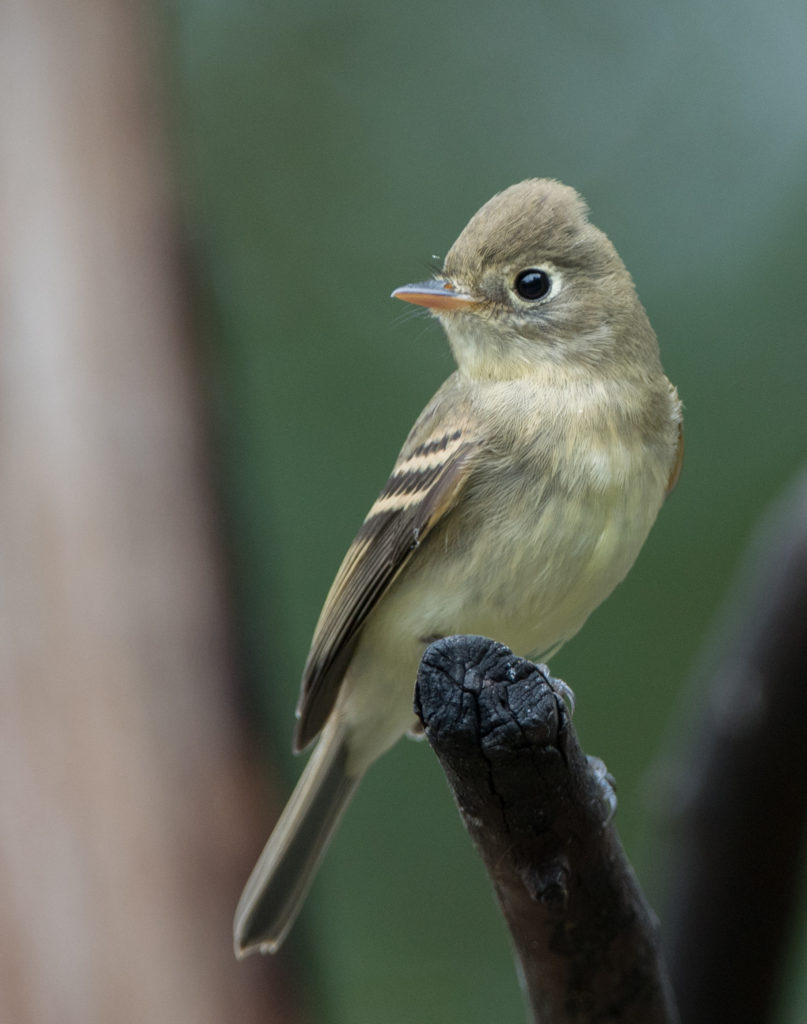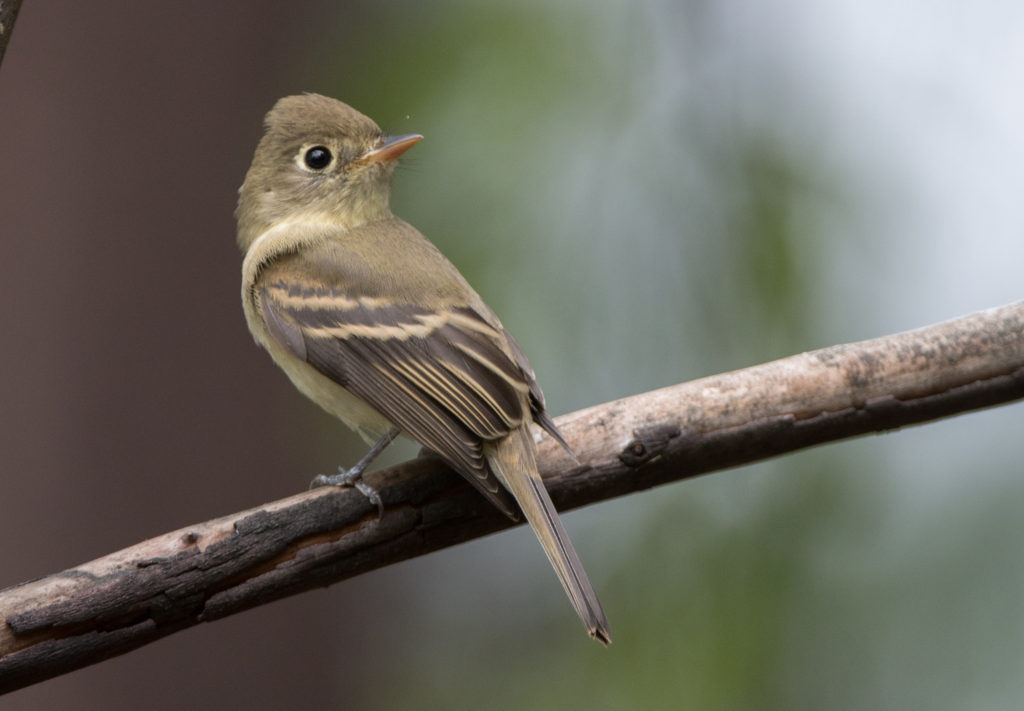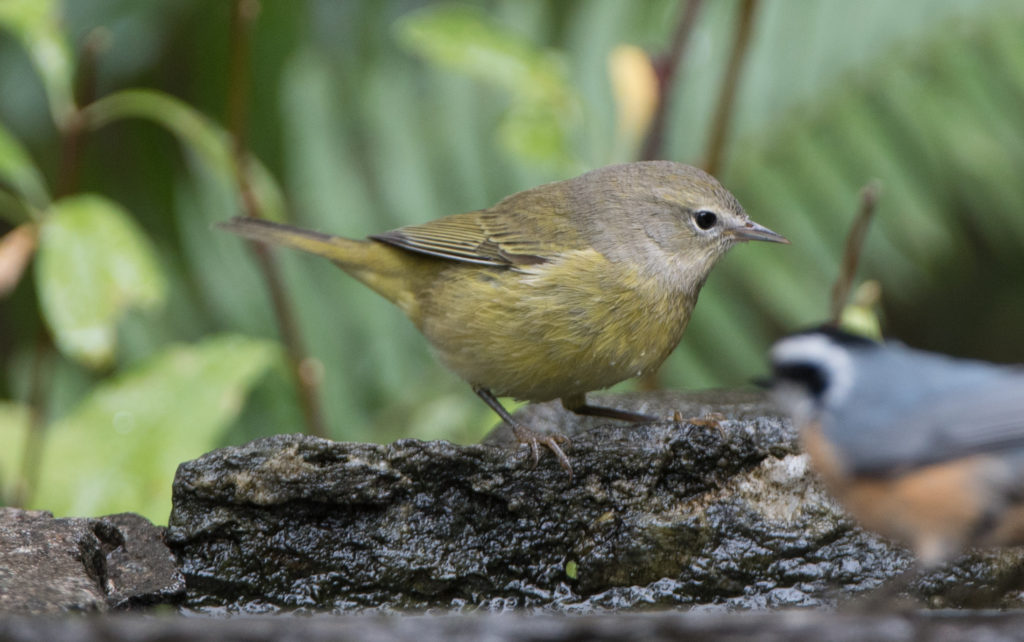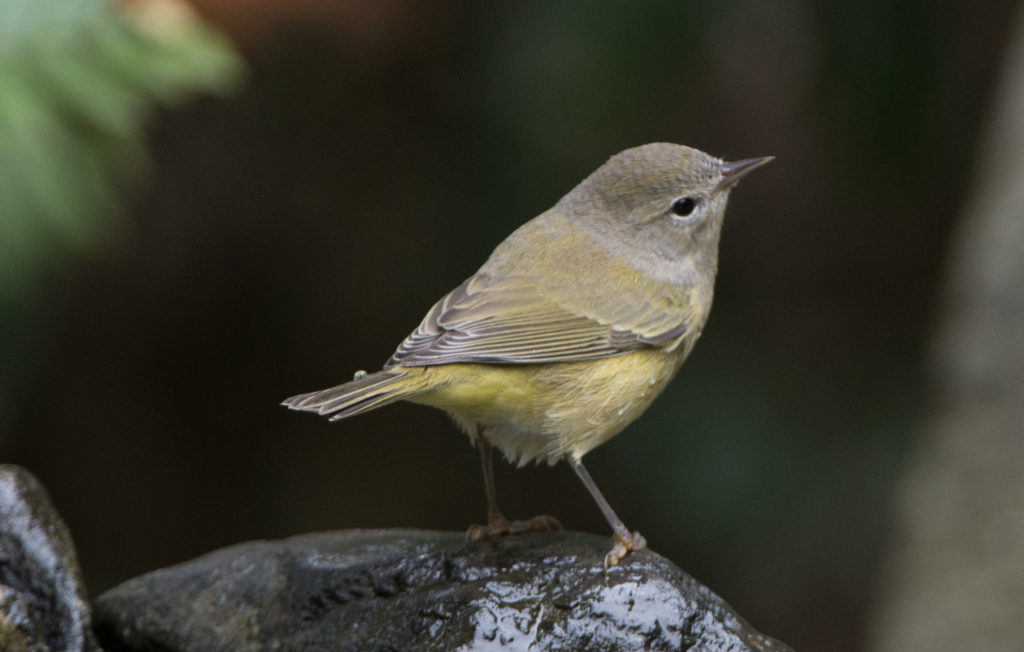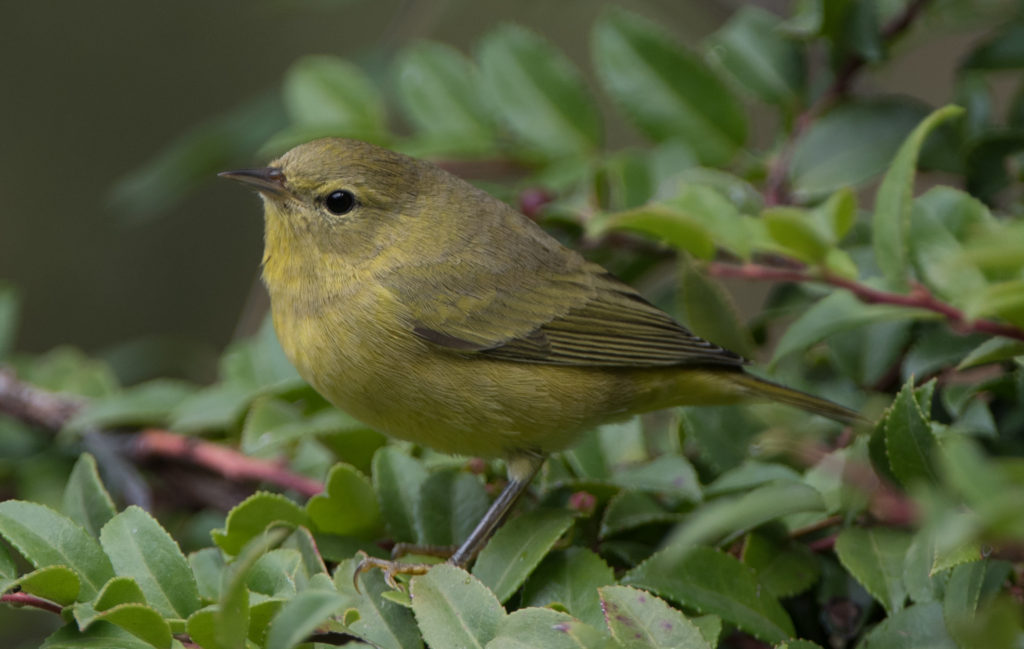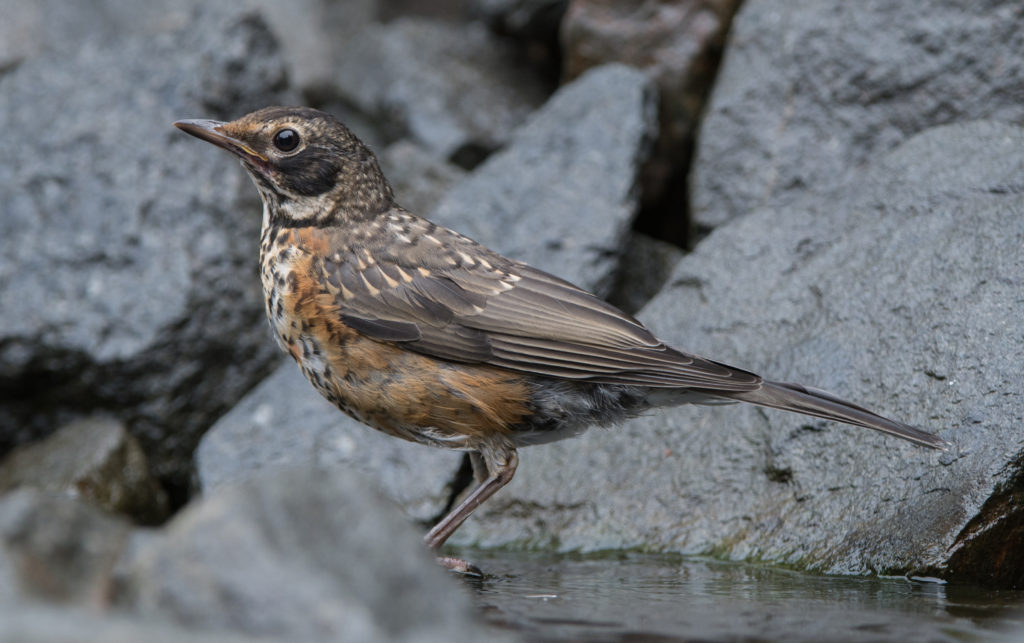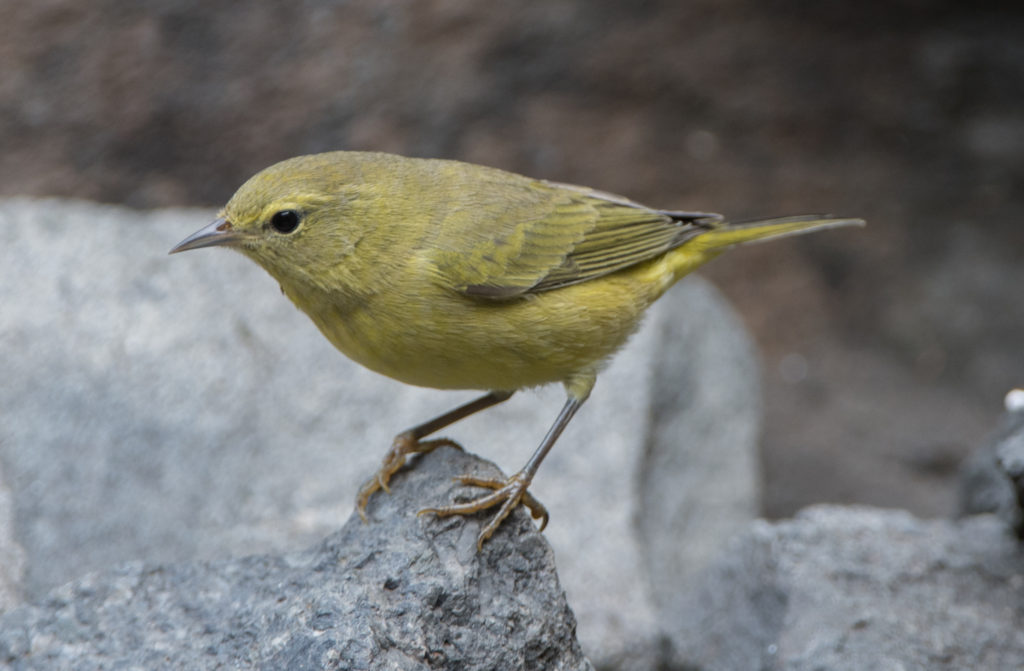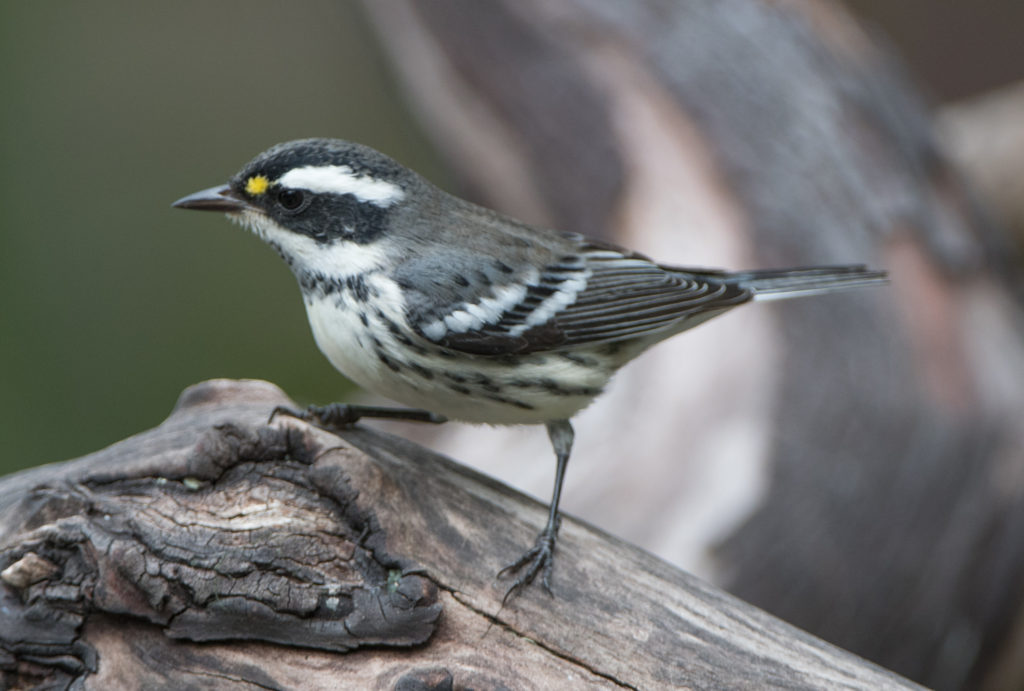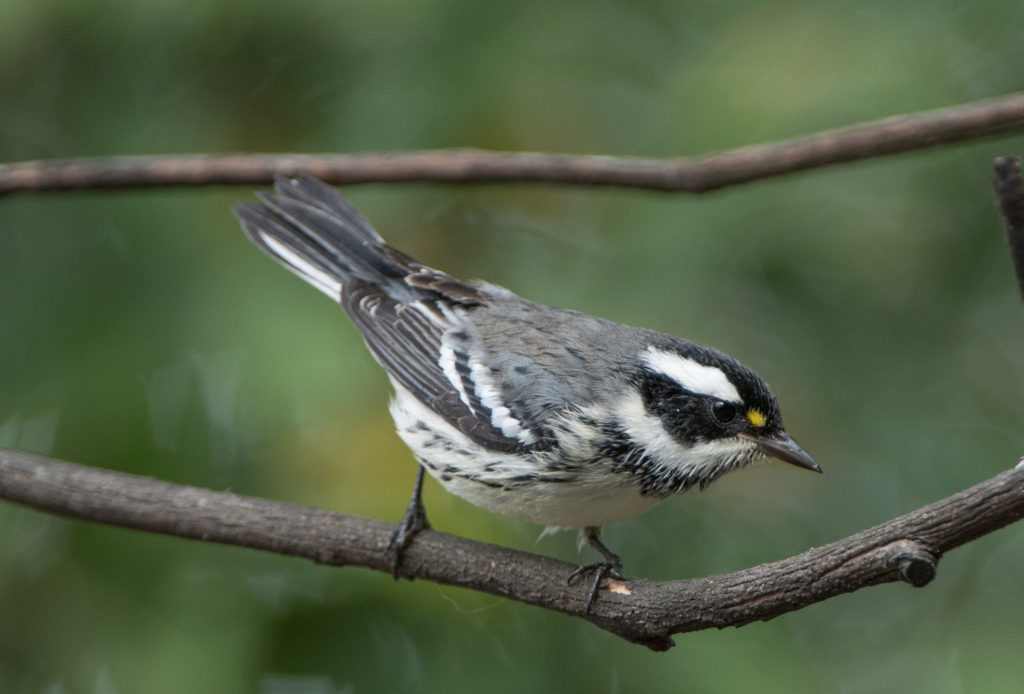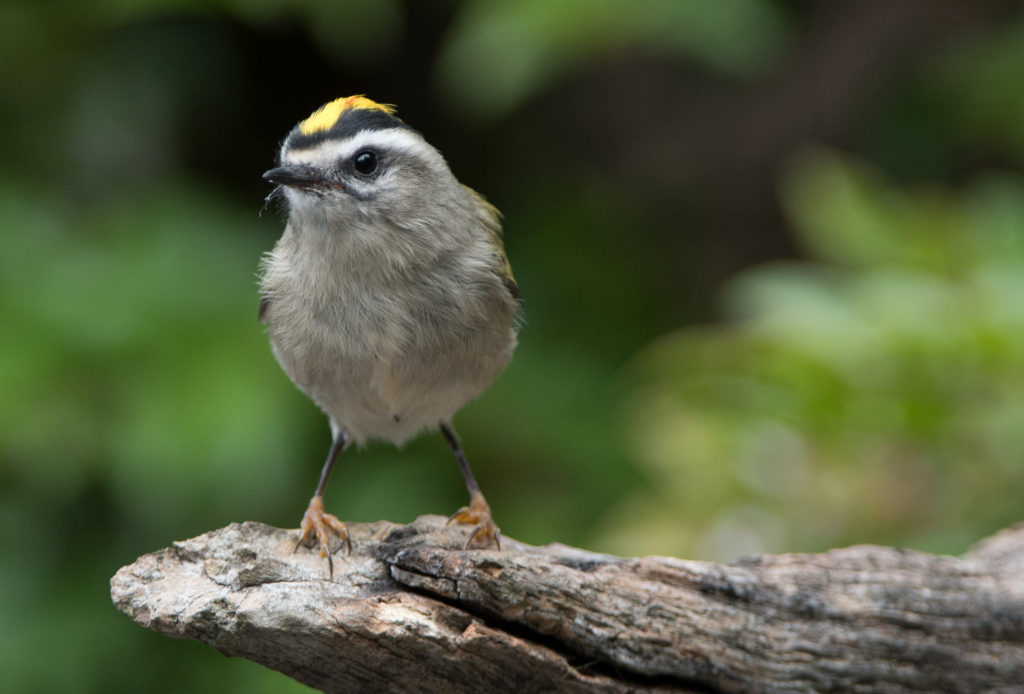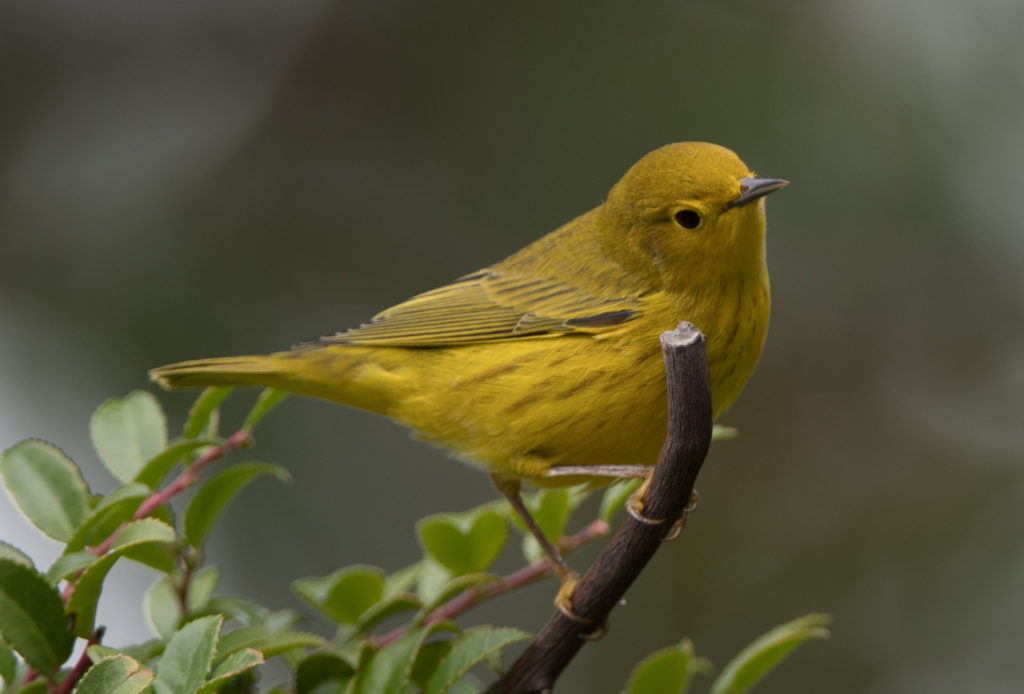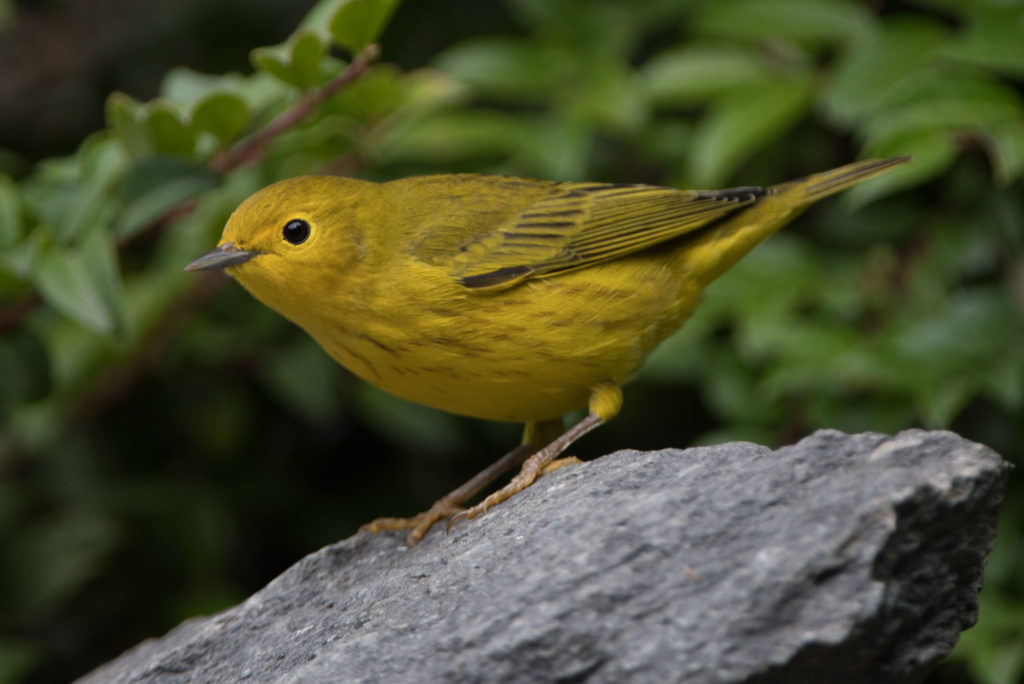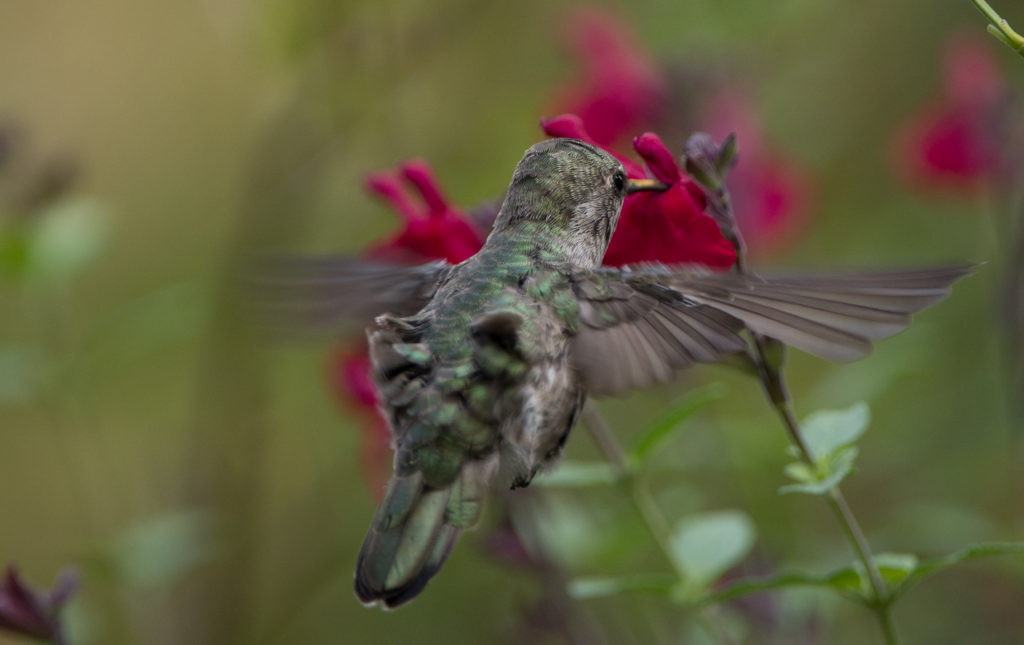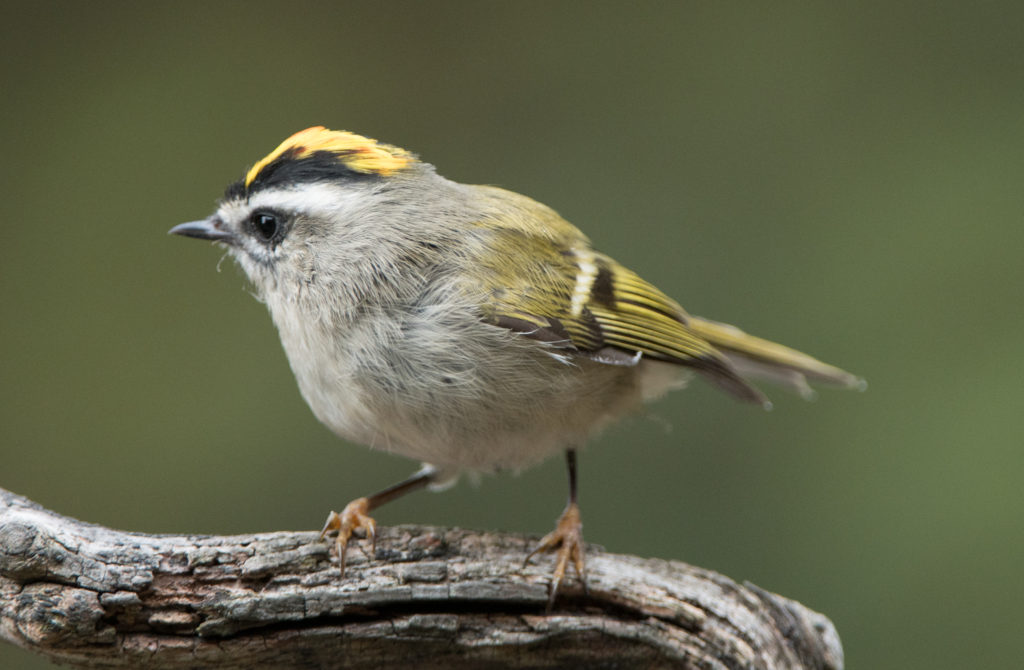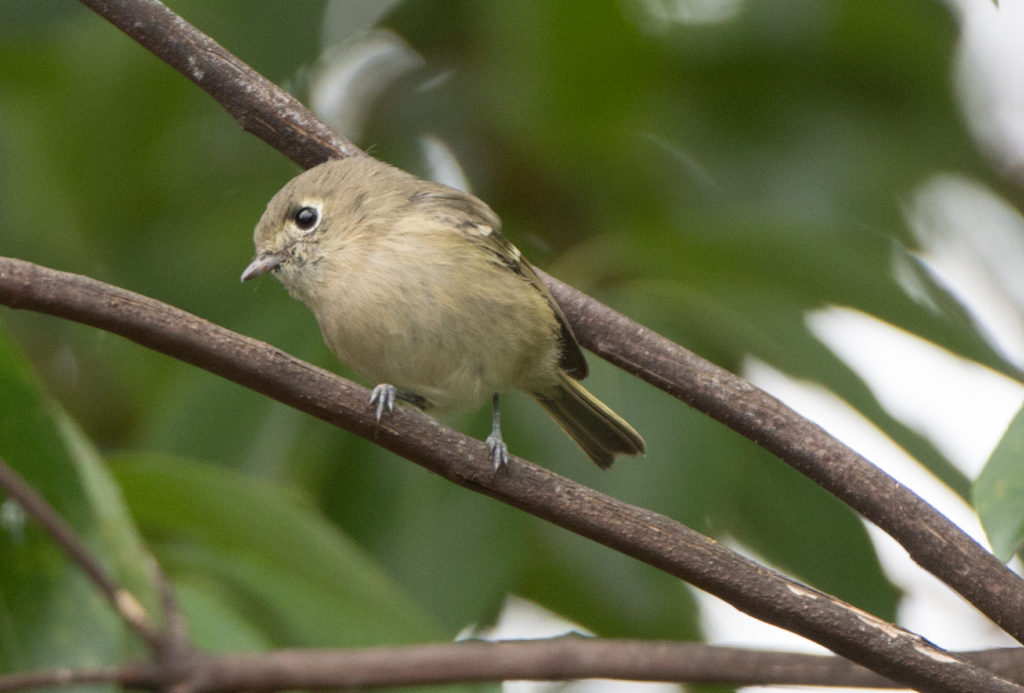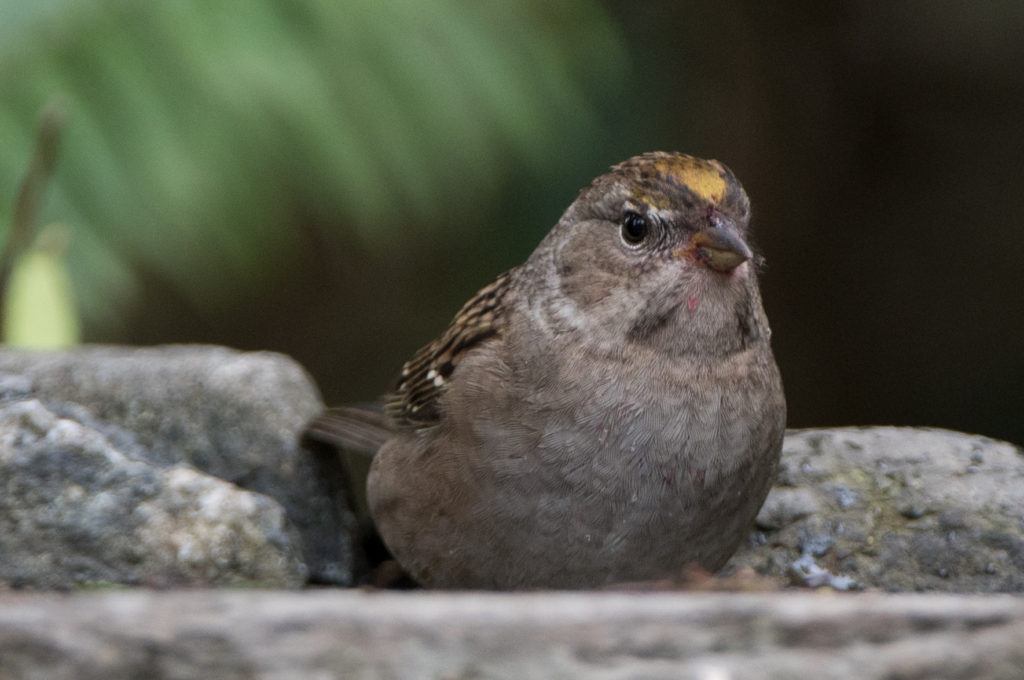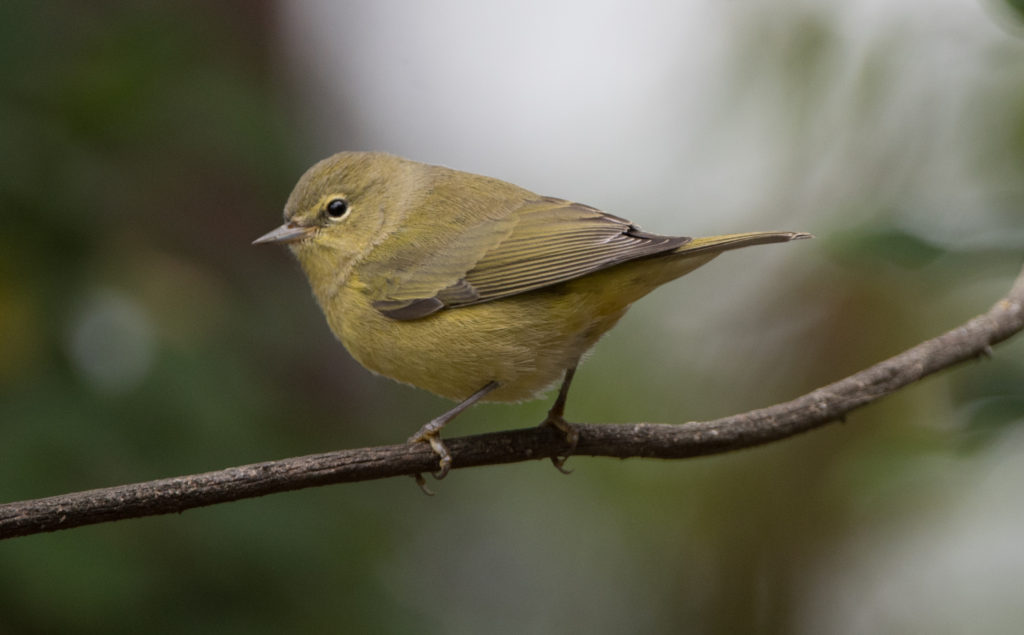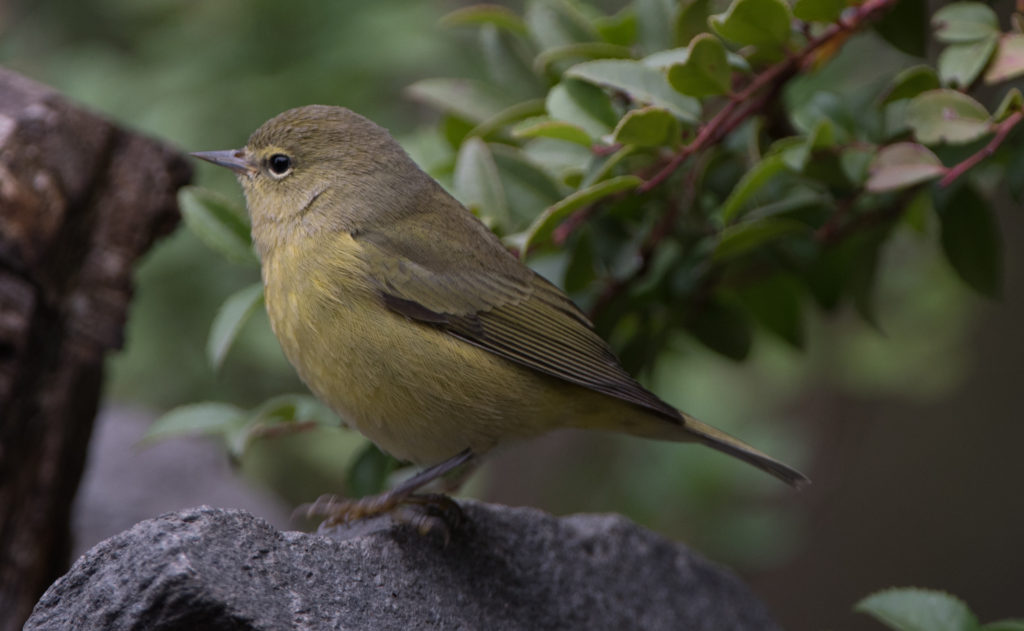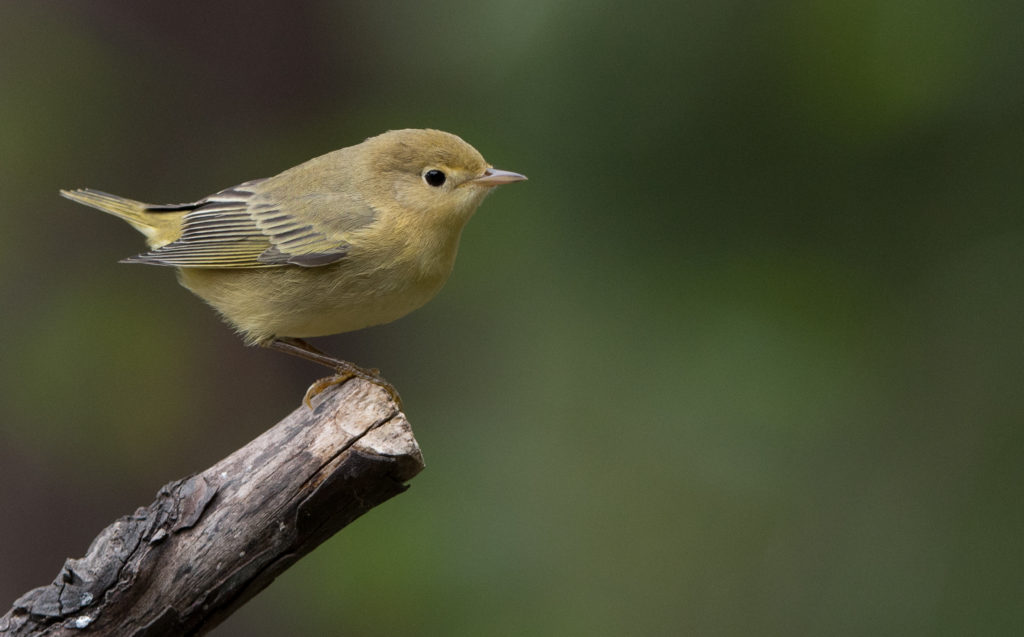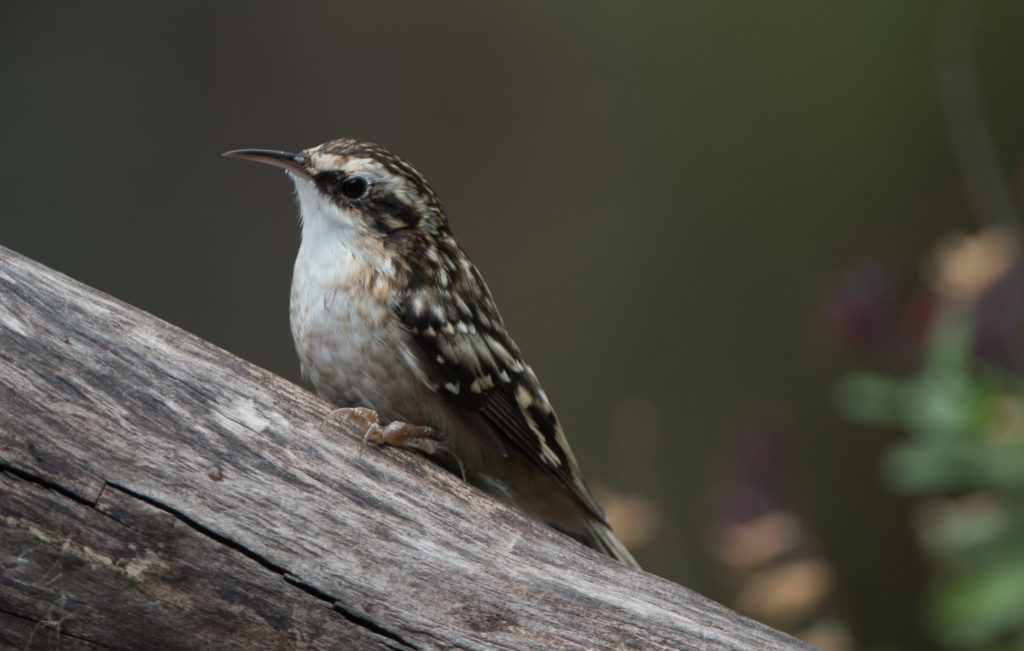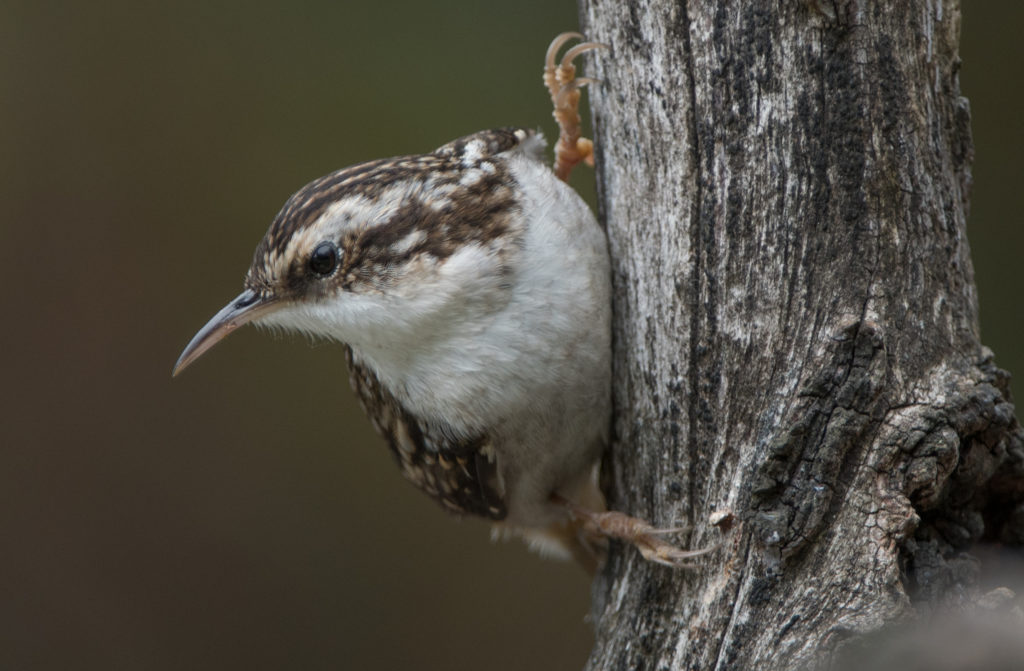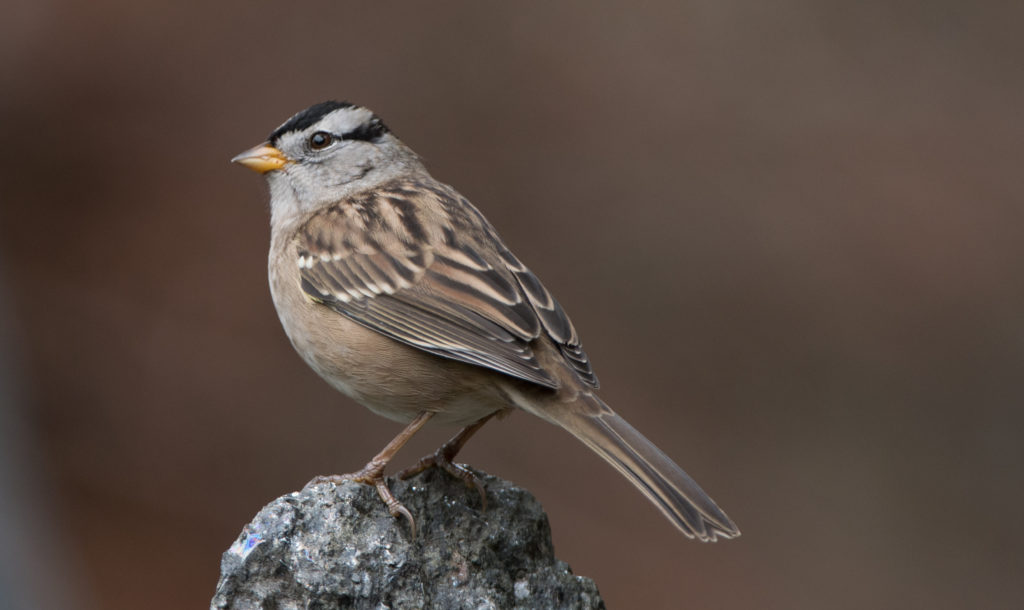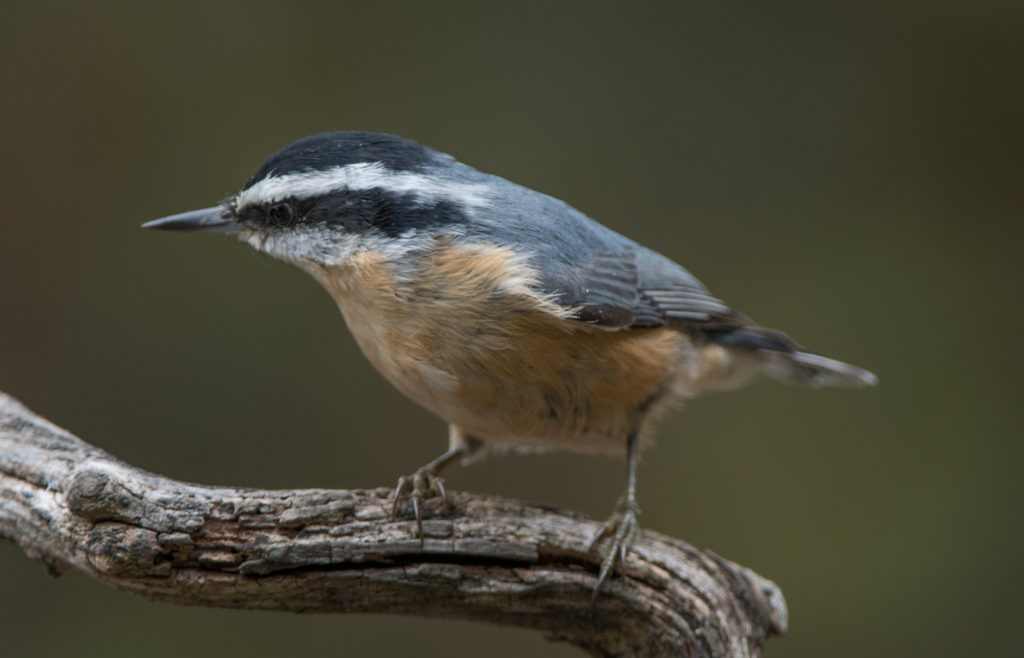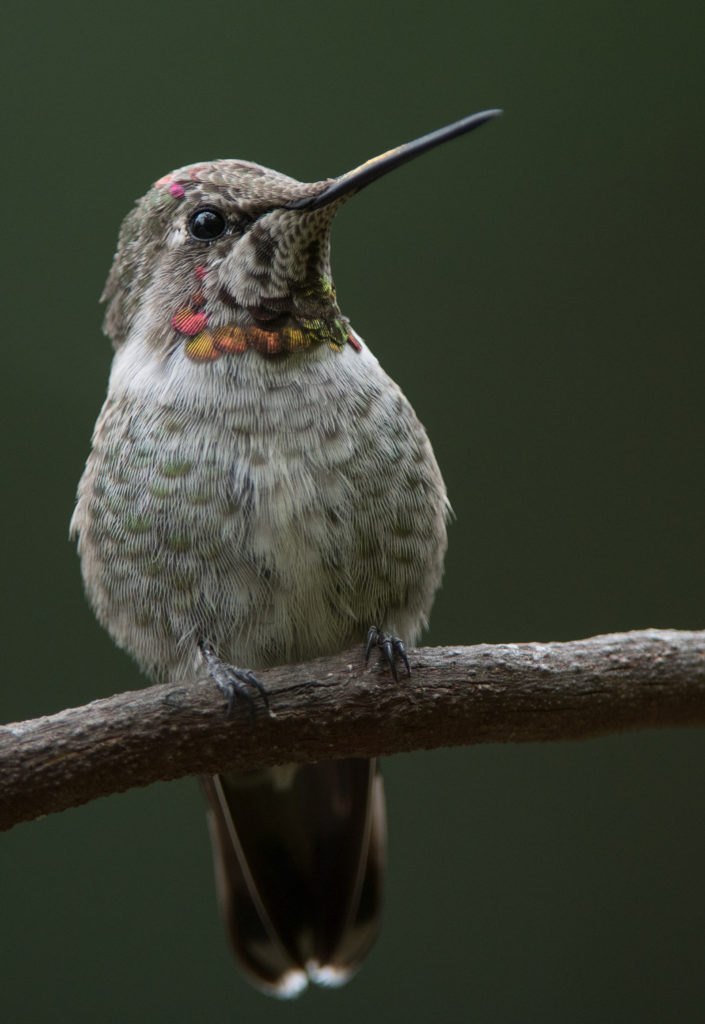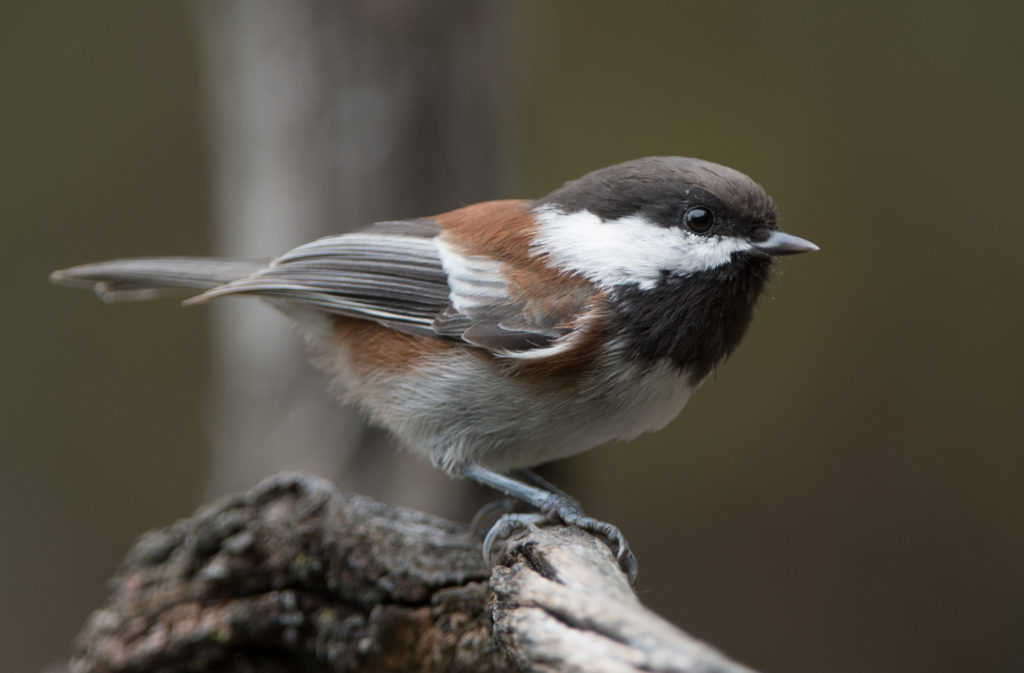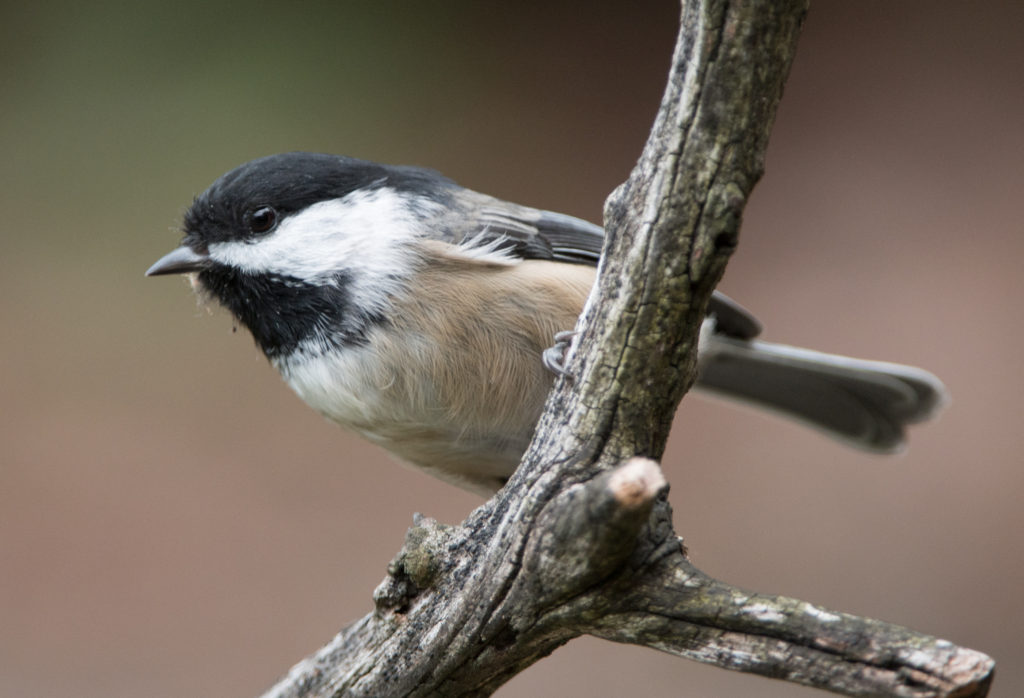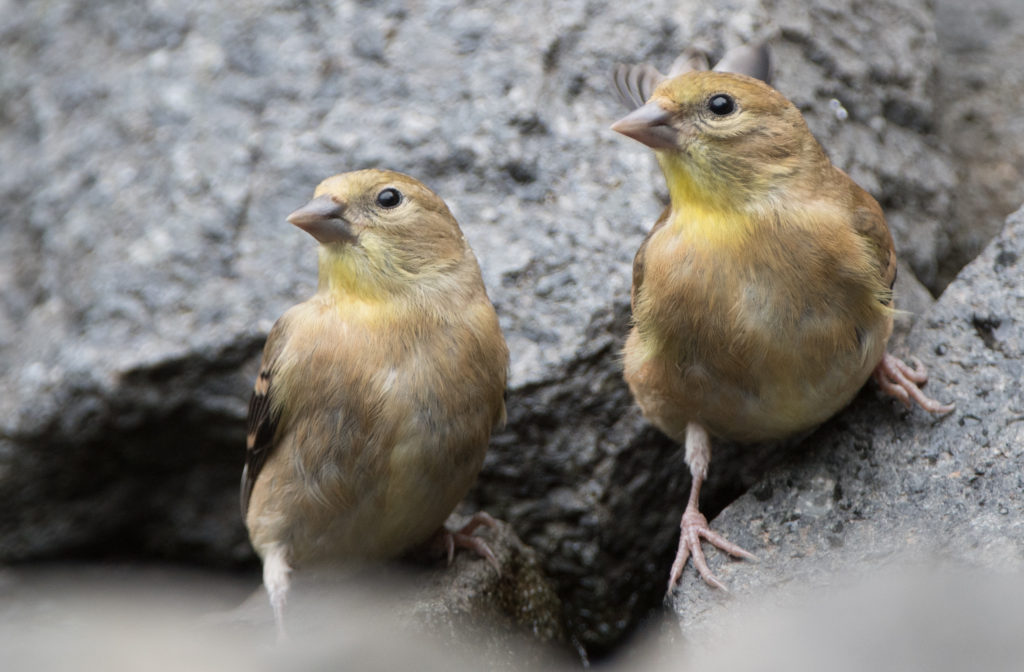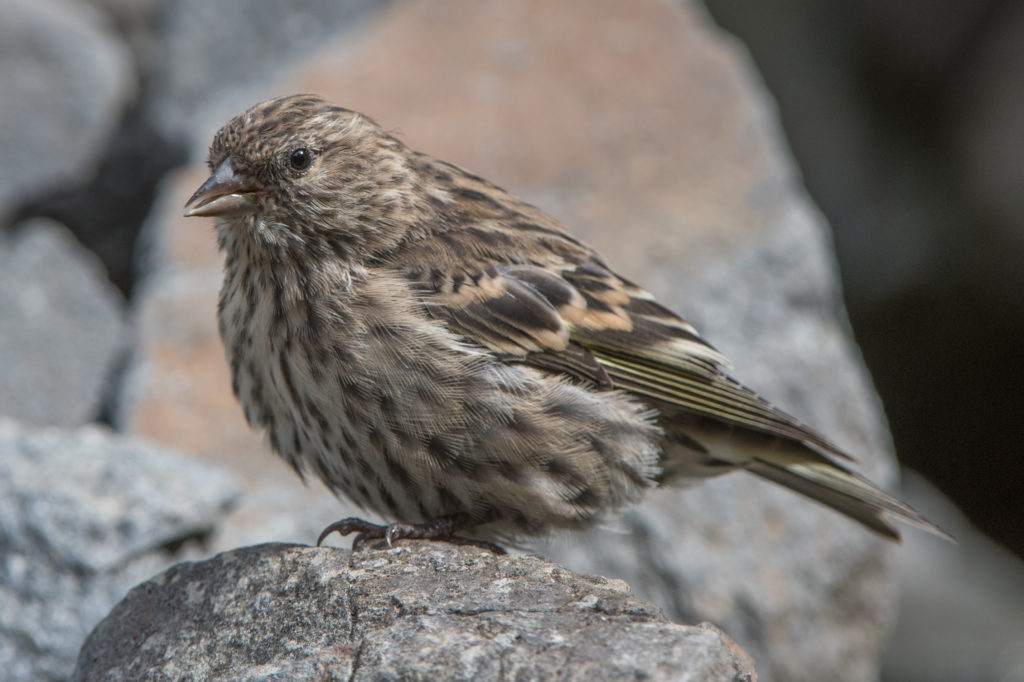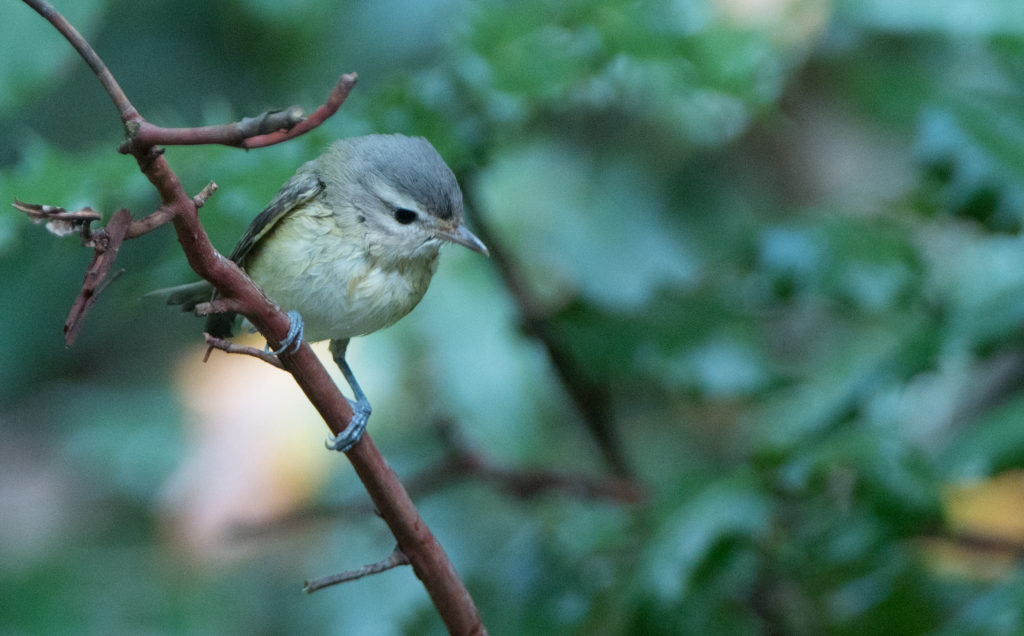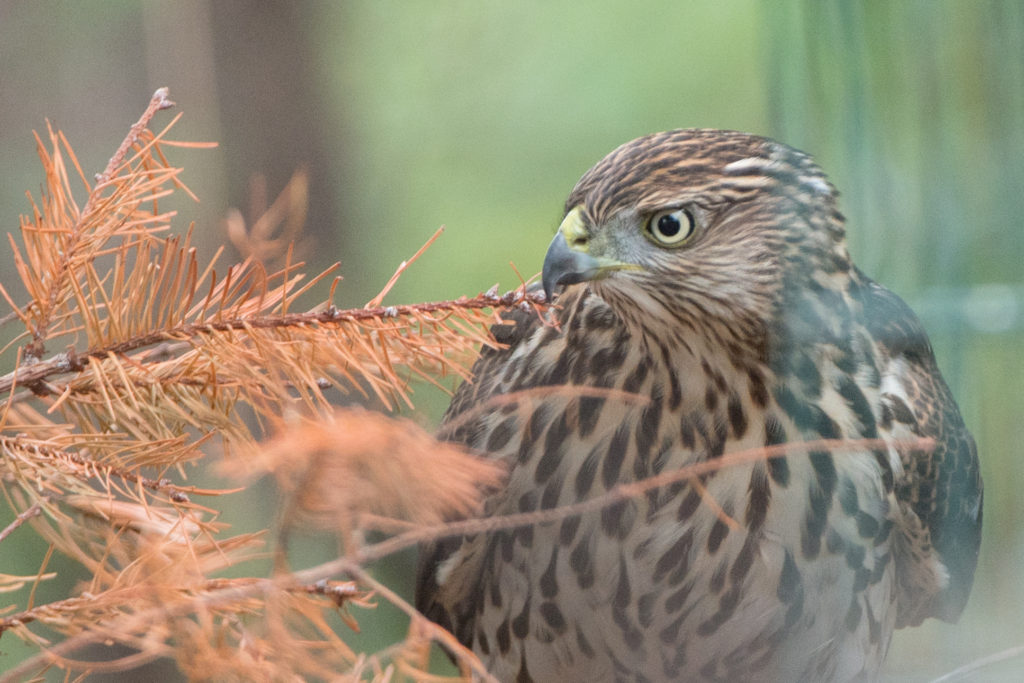About 5pm on September 16, 2019, I had been settled into my yard post after running errands for about twenty minutes with little activity in the yard. Suddenly things took a dramatic turn. I first saw an Orange-crowned warbler which was quickly followed by a second. Then a female Black-throated Gray warbler showed up in the same area. It was followed by a third Orange-crowned warbler! Then a Hutton’s vireo suddenly showed up in the middle of the mix and began trying to dive-bathe in what had become a decidedly crowded water feature. I then noticed a fourth Orange-crowned warbler in the yard, and glancing back at the water feature, saw a male Wilson’s warbler flitting low over the ground near the water feature.
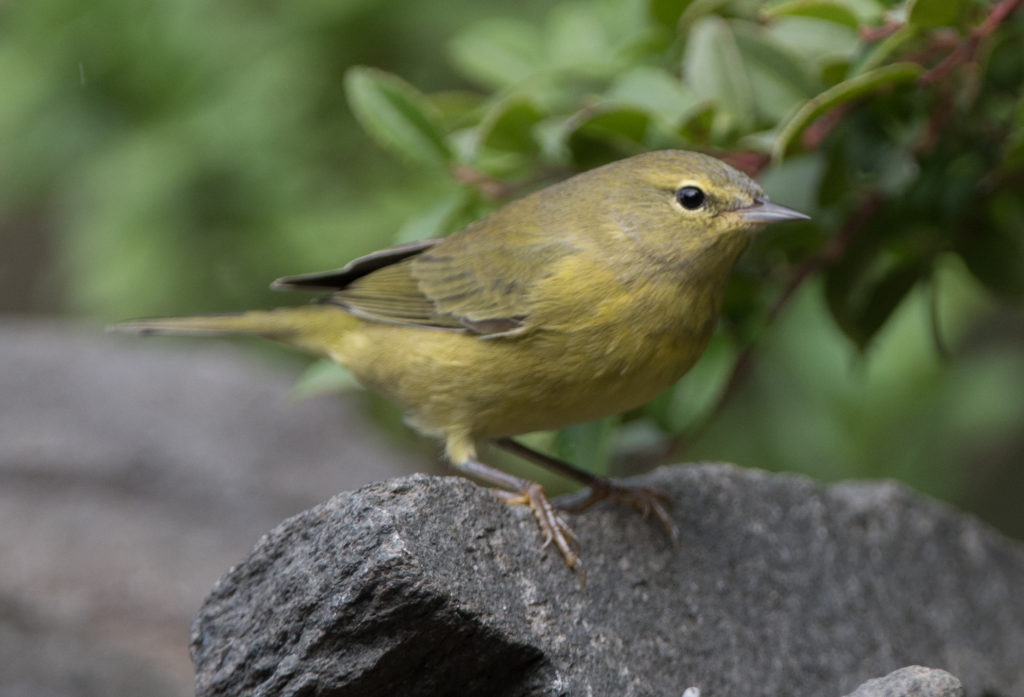
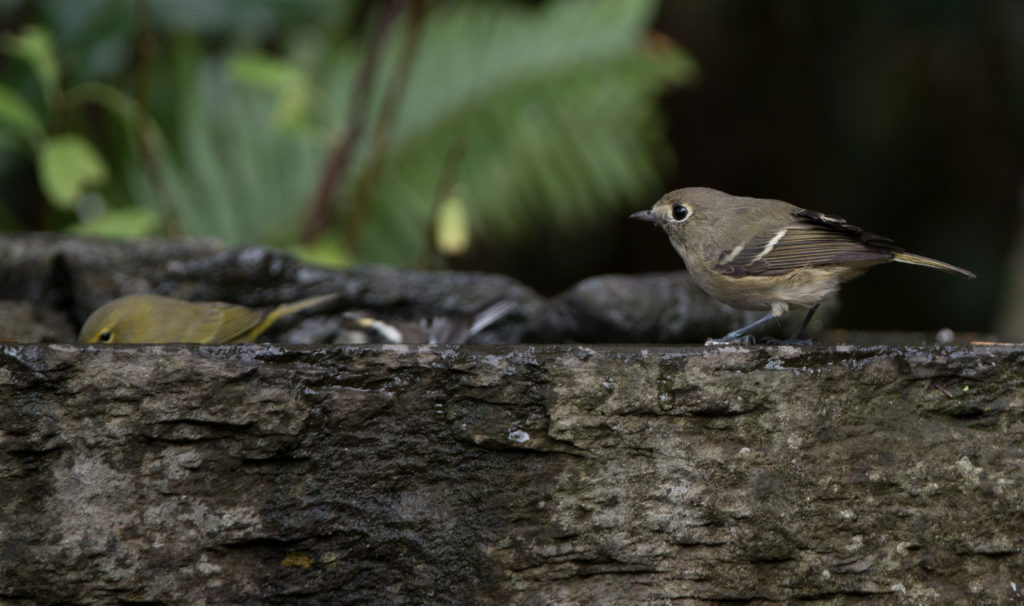
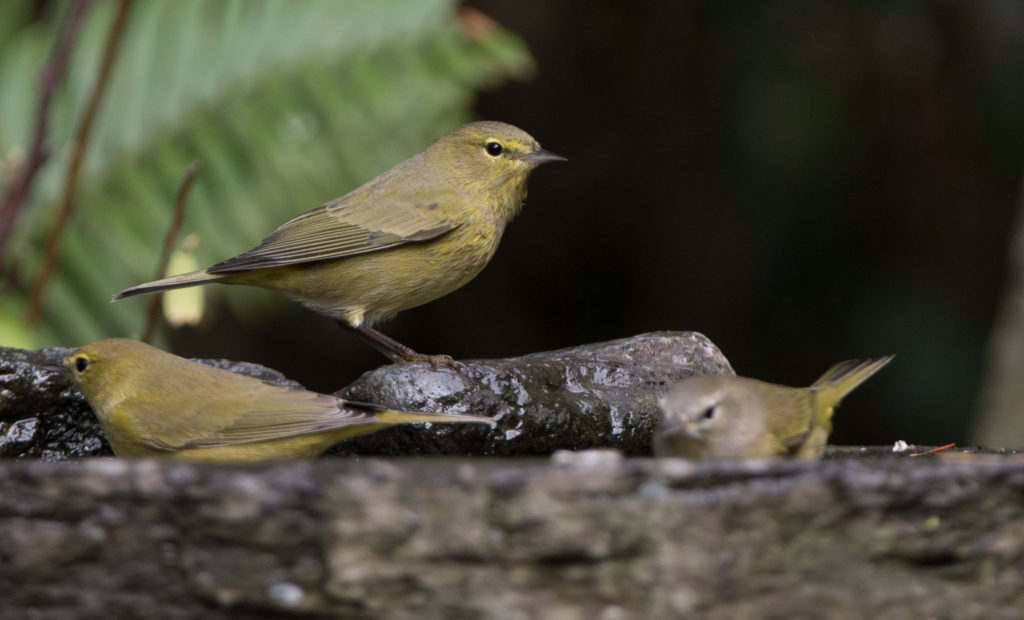
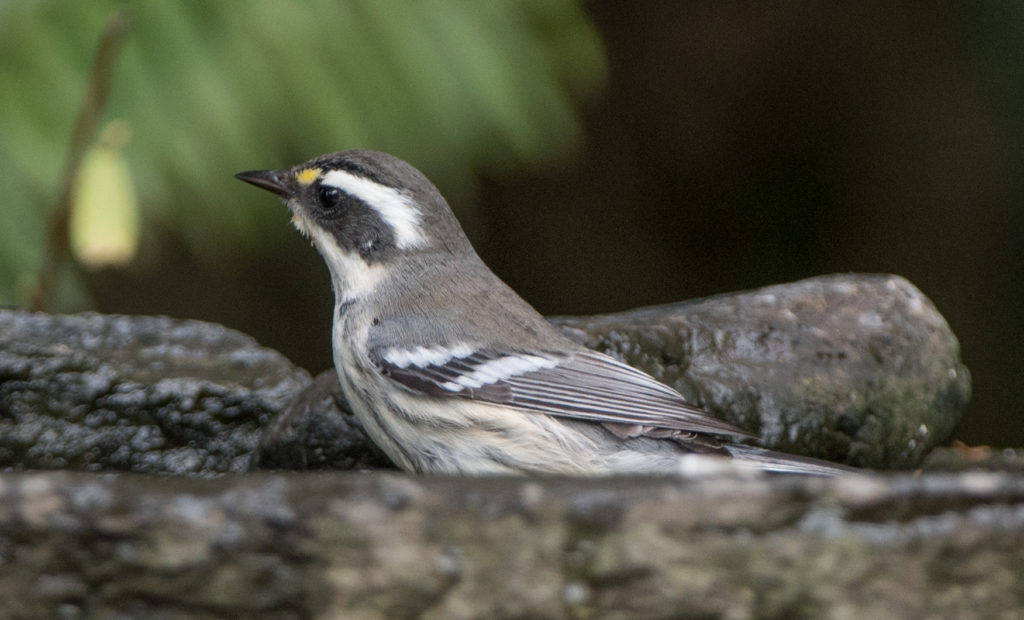
One other sighting I want to mention that didn’t appear in my original post… during all the activity in the yard I saw some movement in our Golden Chain tree and saw, for the second time in the last week or two, a female Western tanager hiding in the leaves. I was able to get two quick record shots but nothing I want to post.
I think I mentioned in a prior post that migrants often travel in mixed-species waves, and I was right in the middle of one!
Almost all of the activity took place in a smaller stone bird bath across the yard… not my primary/optimal photography area. So the photos I obtained were not optimal, but I’m going to post a couple anyway. The show ended with the appearance of an accipiter, probably the same one which had ruined photographic possibilities for an Orange-crowned warbler earlier in the day.
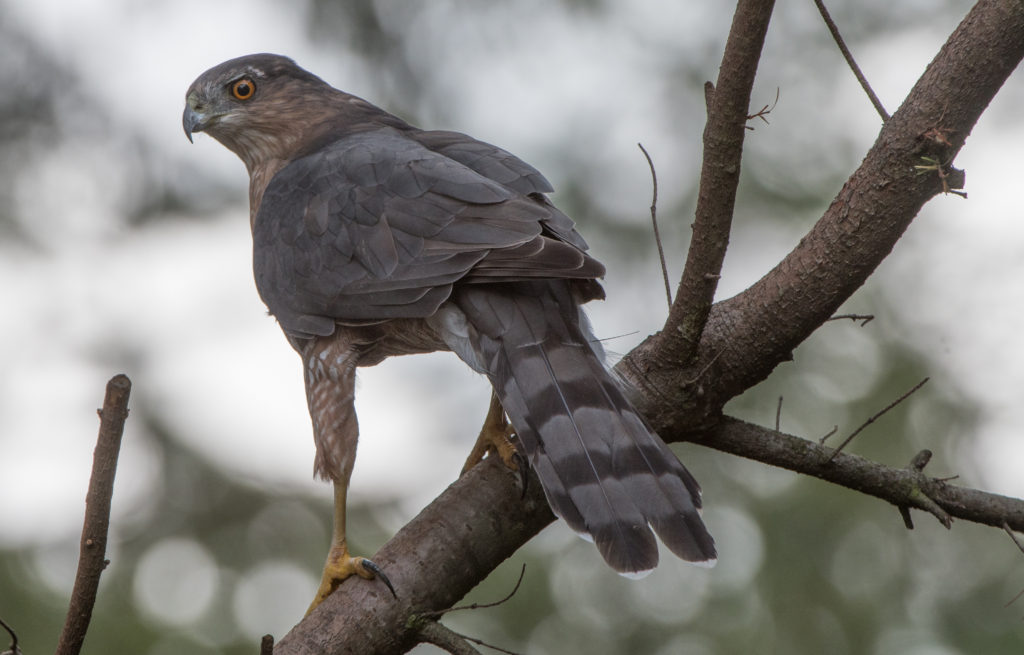
The bad photo I obtained in the afternoon (the one above is one I took in the morning) included a band on the accipiter’s right leg that I can at least partly read. Almost exactly two years ago I photographed one in the yard and was able to locate the bander in Seattle! I’m trying again with this one!
While I’m at it I want to mention that yesterday (9/15/2019) I had a visit by a flycatcher which gave me several opportunities for excellent photos. This was a VERY rare visitor for our yard! This bird was a terror around the yard, chasing other birds. I’m guessing that this was probably a Pacific Slope flycatcher, but flycatchers are even more difficult to identify than fall warblers and you shouldn’t take my word for the identification!
